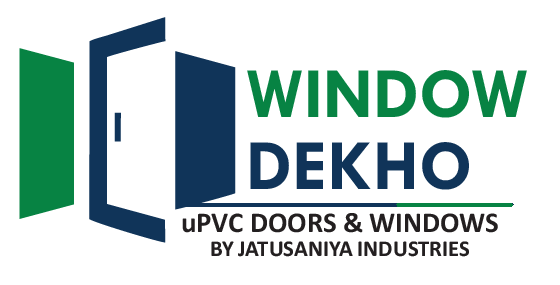Choosing the Right Window Material: uPVC vs. Aluminum vs. Wooden Windows
When selecting windows for your home, several material options exist. This blog aims to provide an insightful comparison between three popular choices: uPVC, aluminum, and wooden windows. By exploring their unique features, benefits, and drawbacks, we aim to assist you in making an informed decision that suits your specific requirements.
- uPVC Windows:
uPVC (unplasticized polyvinyl chloride) windows have recently gained immense popularity. They offer a range of benefits, including:
– Excellent thermal insulation properties, contributing to energy efficiency and reduced heating/cooling costs.
– Low maintenance requirements, as uPVC is resistant to rot, rust, and fading, eliminating the need for regular
painting or staining.
– Good sound insulation creates a quieter indoor environment and enhances overall comfort.
– Affordable pricing compared to other materials.
– High durability and longevity, with minimal risk of warping or corrosion.
However, it is worth noting that uPVC windows may have limited color options compared to other materials and are less customizable in design and style. - Aluminum Windows:
Aluminum windows have their own set of advantages and considerations, including:
– Strength and durability, making them suitable for more giant window openings and buildings.
– Slim profiles, allowing for maximum glass area and unobstructed views.
– Low maintenance requirements, as aluminum resists weather elements and does not rot or warp.
– Wide range of color options and finishes to suit various architectural styles.
– Recyclable nature, contributing to environmental sustainability.On the downside, aluminum windows are known for their poor thermal insulation properties. They can contribute to heat loss and condensation issues without proper thermal breaks. They may also be more expensive compared to uPVC windows. - Wooden Windows:
Wooden windows have a timeless appeal and offer their unique benefits:
– Natural aesthetics, adding warmth and charm to any architectural style.
– Excellent insulation properties, providing good thermal efficiency.
– Customizability in terms of design, shape, and size, allowing for more personalized options.
– Environmentally friendly, as wood is a renewable and sustainable material.However, wooden windows require regular maintenance, including painting, staining, and sealing, to protect them from weathering and deterioration. They are also susceptible to rot, insect infestation, and warping if not correctly cared for.
Conclusion:
Choosing the suitable window material involves considering various factors, including energy efficiency, durability, maintenance requirements, aesthetics, and budget. While uPVC, aluminum, and wooden windows each have advantages and drawbacks, it’s crucial to assess your specific needs and priorities before deciding. Consult with WindowDekho, and weigh the pros and cons of each material to find the perfect windows that meet your requirements and complement your home’s style. Remember, the right choice will enhance your comfort, energy efficiency, and overall satisfaction with your windows for years.
